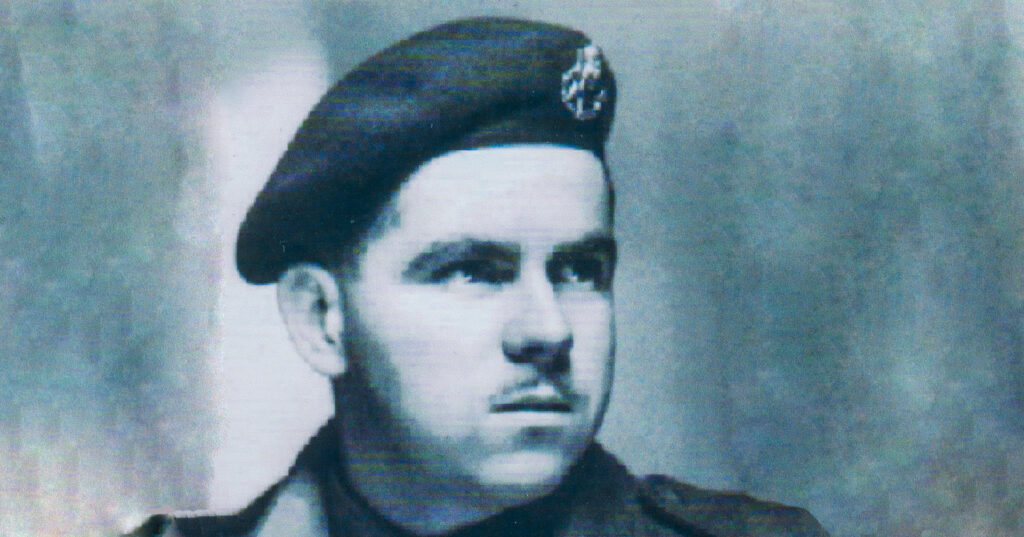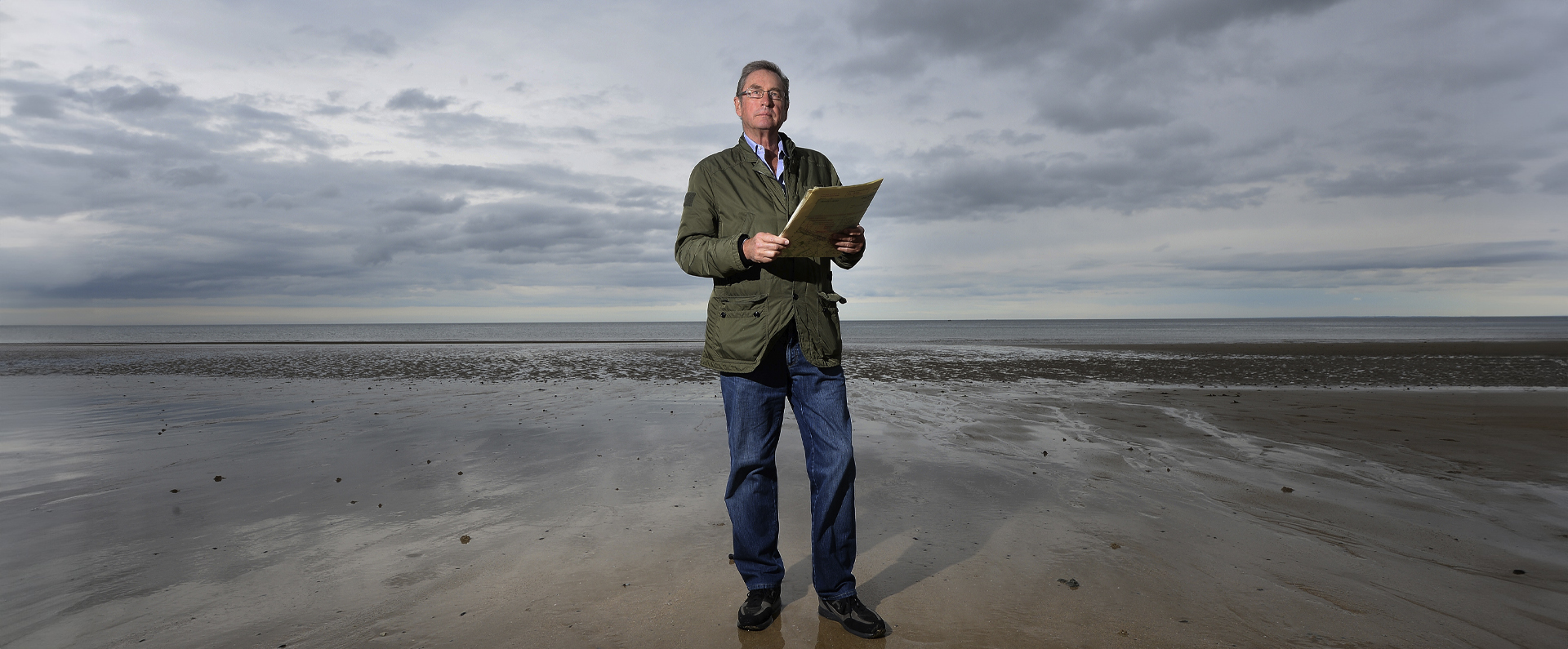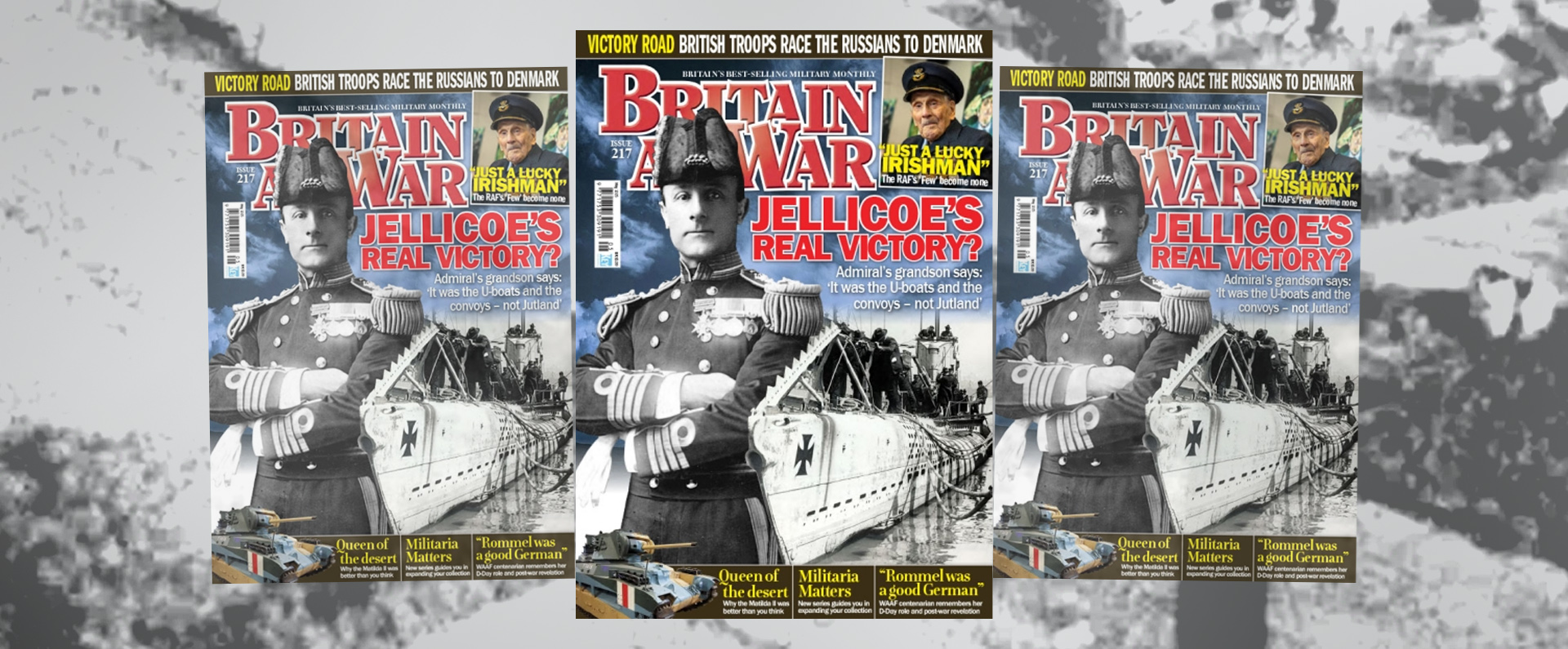
Published in Britain at War in August 2013.
Sergeant Bruce Ogden-Smith DCM, MM
War produces an incredible array of different heroes: dashing fighter pilots who have survived countless dogfights, courageous soldiers who have fought shoulder to shoulder with their comrades whatever the odds, and sailors who have shown phenomenal gallantry in defence of their precious ship.
Some heroes, however, are more low-key and their missions are far more secret. Bruce Ogden-Smith, who received two gallantry awards during the Second World War, undoubtedly fits into this category: for he left his unseen mark on the conflict by swimming silently in the dead of night to enemy-held beaches.
Before the end of 1943, the Allies were actively planning how to invade German-occupied France and thereby create a Second Front. By then, America had entered the war and the Allies were able to plan from a position of strength. Operation Overlord was the codename given to the long-awaited Allied invasion of France.
Operation Neptune was, in turn, the codename given to the naval assault phase of Operation Overlord. Its aim was to gain a foothold on the Continent so that once Normandy was secured, the assault on western Europe and the downfall of Nazi Germany could begin. However, before the detailed planning of the invasion could even begin, intelligence was needed about the nature of the beaches that the Allies intended to land upon. Enter Sergeant Ogden-Smith, one of the most courageous, colourful yet least known characters of the Second World War.
Ogden-Smith had initially been drawn into the world of clandestine operations by his brother, Colin, who was a Special Forces officer. Bruce Ogden-Smith began as a member of the Small Scale Raiding Force (SSRF) and, on the night of 3/4 October 1942, he was one of seven men from SSRF and five from No. 12 Commando to take part in a daring intelligence-gathering raid on German-occupied Sark in the Channel Islands. Operation Basalt, which used torpedo boats, was a complete success. Local islanders passed on invaluable information to the twelve men and an “informative” German prisoner was captured and brought to Britain.
However, it was for an utterly different mission that Ogden-Smith became renowned and that was for swimming to French beaches in the dead of night to gather intelligence – a clandestine activity that become known as “beach reconnaissance”. By this time, Ogden-Smith had joined the Commandos’ fledgling Special Boat Section – now better known, under the auspices of the Royal Marines, as the Special Boat Squadron (SBS). He was transferred to the SBS in January 1943 and was actively employed in the Middle East. However, by the end of 1943, he was back in Europe and soon he was given his formidable new assignment.
The success – or failure – of the Normandy landings depended on accurate and detailed topographical information about the beaches and coastal towns along the French coast. Aerial photographs helped identify locations and the British public handed in holiday photographs and postcards gather in northern France too.
Despite this, much more detailed information about the target beaches and their approaches was still required. The Allies needed to ascertain such things as the geological composition of the beaches, the depths of certain channels, hidden underwater banks and, critically, the exact position of the elaborate German defences. In conjunction with details of tides and weather, these could then be taken into account when planning the landings. The stakes were high – faulty intelligence would jeopardise the entire project and cost lives.
The best account of the heroic activities of Ogden-Smith and his companion Logan Scott-Bowden can be found in Dawn of D-Day by David Howarth. The author writes: “Probably everyone who fought his way ashore on Gold beach believed that they were the first Britons to set foot on it in the past four years, but they were not. Two soldiers had been there, on New Year’s Eve…The men were two Commandos called Logan Scott-Bowden and Bruce Ogden-Smith; the first was a major and the second a sergeant, and they were the chief exponents of the curious art of swimming ashore by night and crawling out of the water unobserved. “
In fact, a small unit for the reconnaissance of beaches had existed for years. It owed its existence to a naval navigator, Lieutenant Commander Nigel Willmott, who was convinced that it was foolish to land an army anywhere on a hostile shore using only charts and photographs. For example, when landing tanks and trucks, it was also crucial to know the hardness of the sand.
After years of half-hearted support, Willmott found his ideas gaining enthusiastic support in the highest quarters. By this time it was mid-winter and, being in poor health, he was not well enough personally to collect samples from French beaches. However, Wilmott was nevertheless well enough to train others for the role, including Scott- Bowden and Ogden-Smith.
Ogden-Smith, the scion of a family that had made fishing tackle for nearly 200 years, could easily have become an officer. When people asked him why he had not opted for officer training (and the prestige and comforts that went with it), he explained that he was quite happy as a sergeant. In fact, he had once given in to temptation and started an officers’ training course, but this ended abruptly when he wrote rude words on an intelligence test that he thought was a waste of time.
Once again, David Howarth writes: “When asked why he made a practice of swimming ashore on hostile beaches, he simply said that he liked it – it was not too bloodthirsty, and yet was quite exciting. In short, Ogden-Smith was one of those brave but eccentric soldiers who can be a great asset to an army if it does not have too many of them: a square peg who had luckily found a square hole.”
During the winter of 1943-4 and the ensuing spring, Scott-Bowden and Ogden-Smith were taken across the Channel whenever there was a moonlit night. They were dropped off within a few hundred yards of the shore, by small landing craft or midget submarines, and then swam ashore.
Much thought had gone into providing them with simple but effective equipment.
They wore loose-fitting waterproof suits, and each of them carried a torch, compass and watch. Their other equipment included an underwater writing tablet, an auger with which to bore holes in the beach and bring up cores of the material it was made from, receptacles for carrying the cores, some meat skewers, and a reel of fine sand-coloured fishing line with a bead on it at every ten yards.
They also had to be armed in case they were discovered by enemy guards on the beach. So they swam with a fighting knife and a .45 Colt (one of the few fire- arms that still worked when full of salt water and sand). However, their main aim was, of course, not to be spotted at all and to return, unnoticed by the enemy, with their priceless intelligence.
Eventually, the two men had visited so many beaches that they found it difficult to remember them all. However, their landing at La Riviere was significant because it happened on New Year’s Eve. Indeed, as the New Year of 1944 approached, Ogden-Smith had crawled to where Scott-Bowden was lying listening to the conversation of two sentries on the sea wall. On the stroke of midnight, Ogden-Smith quietly wished his comrade a happy and prosperous New Year.
The two men did more than just collect samples. They measured the gradients of beaches, and charted sandbars offshore where landing craft might have become stranded. David Howarth writes: “In the middle of January they were on top of the fatal shingle bank at Omaha [beach]. They made an entirely uneventful tour of Utah [beach]; but on a second visit to Omaha, a sentry came along the beach between them and the sea and tripped over their fishing line. It was through this accident, exciting at the time, that the American Army was able to land with the assurance that the beach was not mined; because if it had [been], the sentry would not have been there.
“The two men bore a charmed life. They were not only never seen, but every time, when they finished their probing, they waded out through the waves again and swam three hundred yards to sea and flashed their torches away from the land and waited, and every time, before cold and cramp and exhaustion crippled them, their boat came in and picked them up again. In the quest for mud, they swam ashore on thirty beaches.”
Ogden-Smith’s Military Medal (MM) was announced on 2 March 1944 but no detailed information was published about why he had received it. The award was simply announced under a general heading “in recognition of gallant and distinguished services in the field”. His investiture had been planned for 6 June 1944 but he was unable to attend as this was also the date of the D-Day landings. In fact, Ogden-Smith and Scott-Bowden were on Omaha beach again, this time as guests of the American Army which had taken them as their guides. Ogden Smith’s Distinguished Conduct Medal (DCM) was gazetted on 15 June 1944 and was announced for the same classically vague ”gallant and distinguished services in the field”.
However, his confidential recommendation noted that Ogden-Smith had showed “courage, coolness and ability in assisting Major Scott-Bowden to carry out the first experimental beach reconnaissance”. Scott-Bowden was also decorated with two gallantry awards for his bravery: the Distinguished Service Order (DSO) and Military Cross (MC).
At the end of the war, Ogden-Smith is believed to have returned to his home in Wales, where his wife had been working in a factory during the war, where he died in December 1986.
This wonderful man was, fortunately, a hoarder so when, in September 2006, his medals came up for auction at Dix Noonan Webb, they were accompanied by some fascinating artefacts. These included several small pieces of fabric taken from a kayak used by Ogden-Smith and Scott-Bowden off Normandy; his original Commando fighting knife used as a silent weapon and for probing mines; and his specially adapted fishing reel and line made in his father’s workshops and taken to Normandy to assist in beach reconnaissance. It was that very same reel and line that had once been trodden upon by that enemy sentry on Omaha beach.
Download a PDF of the original Britain at War article
For more information, visit:
LordAshcroftOnBravery.com

